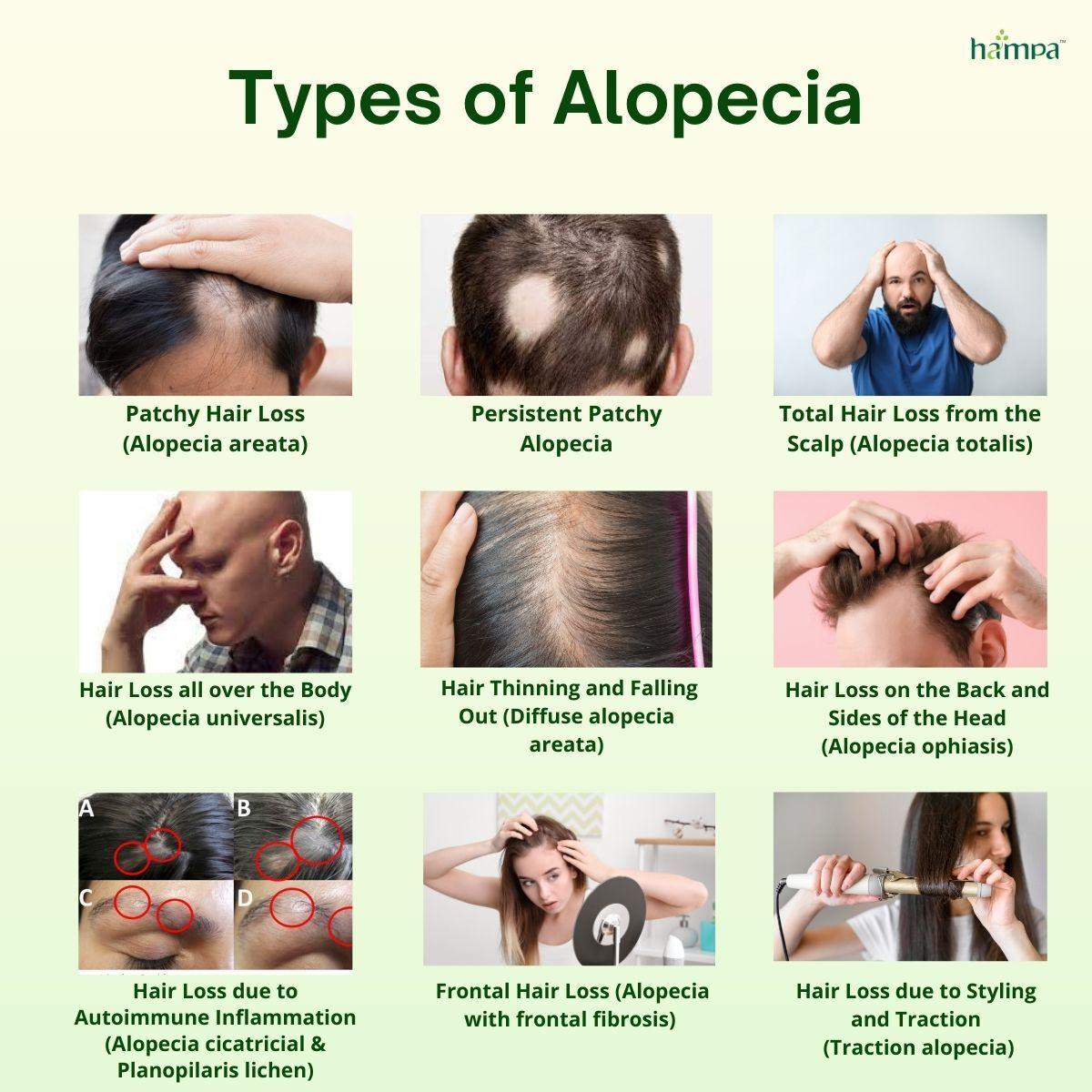
Alopecia refers to conditions characterised by hair loss, which various factors can cause. While not contagious, alopecia can indicate underlying health issues. One common type is autoimmune alopecia areata, but there are other causes unrelated to abnormal immune system responses.
Some forms of alopecia are hereditary, lifestyle-related, or influenced by environmental factors, as well as psychiatric conditions that involve hair pulling. Both oral medications and topical therapies are used to treat different types of alopecia. Certain forms may also require behavioural changes to reverse hair loss.
Alopecia can be triggered by anything that affects the natural hair growth cycle. While some forms are preventable, others can occur at any age. In addition, factors such as family history, age, gender, and ethnicity can influence the likelihood of developing alopecia.
In a 2020 study on alopecia prevalence among different races, researchers found that African Americans were more prone to acquiring alopecia areata than whites, while Asians had the lowest probability. They suspected a combination of health inequities and genetics as the primary explanation.
Let's explore the various types of alopecia:
- Patchy Hair Loss (Alopecia areata): This type involves hair loss in patches, often on the scalp but can also affect eyebrows, eyelashes, and other body areas. Alopecia areata is an autoimmune disease where the immune system mistakenly attacks healthy hair follicles, resulting in hair loss. It tends to run in families.
- Persistent Patchy Alopecia (Alopecia areata with persistent patchiness): This condition refers to patchy hair loss that remains constant over time. It shares the same causes as alopecia areata.
- Total Hair Loss from the Scalp (Alopecia totalis): Alopecia totalis involves the complete loss of hair on the scalp. It appears to be associated with a specific immune system reaction, but researchers are still investigating the exact causes.
- Hair Loss all over the Body (Alopecia universalis): Alopecia universalis is a condition where hair loss affects the entire body, including the scalp. The reason why some individuals develop this disorder while others don't, similar to other autoimmune diseases, remains unknown.
- Hair Thinning and Falling Out (Diffuse alopecia areata): Diffuse alopecia areata, also known as telogen effluvium, causes hair to thin and fall out in scattered areas throughout the scalp rather than in patches. Similar hair loss patterns may occur on other body parts in rare cases. Severe stress, hormonal changes, and medication side effects can contribute to this type of alopecia.
- Hair Loss on the Back and Sides of the Head (Alopecia ophiasis): Alopecia ophiasis primarily affects the sides and back of the scalp. It is an autoimmune condition that commonly affects adolescents.
- Androgenic Alopecia: This hereditary condition, also known as male or female pattern baldness, affects both men and women. Male pattern baldness typically starts with a receding hairline or crown hair loss. In contrast, female pattern baldness often involves hair thinning along the part line, with less likelihood of complete baldness.
- Hair Loss due to Autoimmune Inflammation (Alopecia cicatricial and Planopilaris lichen): Cicatricial alopecia is an inflammatory disorder that can occur after a burn or severe illness, leading to slow or rapid hair loss and discomfort. Planopilaris lichen, another inflammatory condition, mainly affects young women and results in smooth patches of skin on the scalp.
- Frontal Hair Loss (Alopecia with frontal fibrosis): Frontal fibrosing alopecia, a type of lichen planopilaris, causes gradual but progressive hair loss above the brow. It can also affect eyebrows and eyelashes.
- Central Centrifugal Cicatricial Alopecia (CCCA): CCCA causes hair loss starting at the crown and spreading across the top of the head. Research indicates that CCCA primarily affects Black women over 30, although the exact reasons remain unclear.
- Hair Loss due to Styling and Traction (Traction alopecia): Traction alopecia occurs when hair is repeatedly pulled or tightly styled in the same direction, leading to hair loss in the affected areas.
- Alopecia Barbae: Alopecia barbae is an autoimmune disorder that causes circular patches of hair loss in the beard area. Over time, these patches can overlap, making it challenging to predict the extent of hair loss.
- Postpartum Alopecia: Postpartum alopecia refers to the sudden and severe hair loss experienced by some women after childbirth. It is not considered ordinary hair loss but rather the shedding of excess hair that grew during pregnancy. Regular hair growth typically resumes within a few months.
Understanding the different types of alopecia can help identify specific causes, symptoms, and appropriate treatments for each condition. If you're experiencing significant hair loss or have concerns, consulting with a healthcare professional or dermatologist is advisable.
To know more about Hampa products that can tackle hair loss, visit https://hampawellness.in/collections/hair-care
Hampa = Wholesome Nutrition. All Hampa products use Hemp and other natural ingredients to heal and rejuvenate to achieve our brand mission of bringing you a variety of hemp-based personal care, therapeutic, and nutritional health products that are sustainably sourced and scientifically supported.

